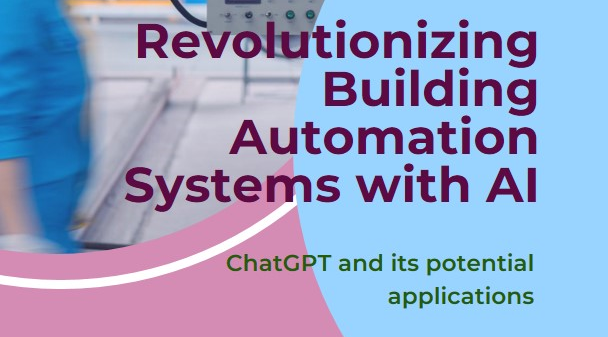Phil Zito’s episode on the Smart Buildings Academy Podcast, titled “ChatGPT Use Cases for BAS,” provides valuable insights on how AI, particularly ChatGPT, can be leveraged across various aspects of Building Automation Systems (BAS). Here’s a detailed analysis of the episode and how we can apply the concepts to enhance our careers as facility maintenance professionals:
Key Takeaways from the Episode:
- Leveraging AI for Sales and Proposals: Phil highlights how AI can streamline sales pitches by quickly analyzing documents like MEP specifications. By understanding project details, we can offer targeted strategies to clients, aligning proposals with their sustainability goals. This approach positions us as subject matter experts and demonstrates a proactive understanding of the client’s needs.
- Enhanced Troubleshooting with AI: AI can be a powerful tool for troubleshooting by analyzing BAS graphics or sequences of operations. For instance, ChatGPT can suggest optimal sequences of operations or identify potential control issues from screenshots of VAV boxes. This capability empowers us to make more informed decisions when diagnosing and resolving system faults, saving valuable time and resources.
- Automating Programming Tasks: One of the most exciting applications Phil demonstrates is using AI to automate programming tasks. For example, he walks through creating a sequence of operations using AI and converting it into block layouts for programming in BAS software like Niagara or JCI CCT. This reduces the complexity of programming tasks, making it easier for junior technicians to follow precise instructions and ensuring consistency in how programs are developed.
- AI in Facility Design and Optimization: AI can assist in optimizing facility designs by analyzing operational data and suggesting improvements. For instance, by inputting operations and facility graphics sequences, AI can provide tailored recommendations to enhance energy efficiency or retrofit strategies, aligning our work with broader sustainability goals.
Applying These Concepts in Our Careers:
- Improving Sales Strategies: We can use AI to enhance our approach when interacting with stakeholders, particularly when proposing solutions or upgrades. By leveraging AI-generated insights, we can craft compelling narratives that align our services with the specific goals of the facilities we manage, such as energy efficiency or sustainability.
- Streamlining Maintenance Operations: Incorporating AI into our daily troubleshooting processes can improve efficiency. For example, when dealing with recurring issues in HVAC systems, we can use AI to quickly identify probable causes and recommend corrective actions based on historical data, allowing us to address problems proactively.
- Training and Onboarding: AI’s ability to generate detailed, step-by-step programming instructions can be especially beneficial in training new technicians. By providing clear guidance on using BAS software, we can accelerate the learning curve for newcomers, ensuring they can contribute effectively to system maintenance and programming tasks.
- Enhancing Preventive Maintenance: AI can help us develop more effective preventive maintenance schedules by analyzing equipment performance data. This not only improves the reliability of our systems but also aligns our maintenance practices with the evolving needs of the building, ultimately extending the lifecycle of our assets.
Conclusion:
Phil Zito’s episode offers a glimpse into AI’s transformative potential in our field. Integrating AI into our workflows can streamline sales, enhance troubleshooting, automate programming, and optimize facility operations. As we explore these AI applications, we unlock new opportunities to innovate and add value to our roles as facility maintenance professionals.
Key Takeaway: By embracing AI, we empower ourselves to enhance our technical skills, streamline operations, and provide higher value to our clients and stakeholders, driving personal and professional growth in the evolving landscape of building automation.



